Ang Kiukok – Introducing the Famous Filipino Artist
In the realm of Filipino artistry, Ang Kiukok’s biography stands as a testament to the profound impact of a singular creative journey. Renowned for his masterful Ang Kiukok paintings, this visionary artist carved a distinctive niche within the vibrant tapestry of Philippine visual arts. As a pivotal figure in the art association of the Philippines, Ang Kiukok’s oeuvre radiates a fusion of emotions and societal insights, inviting us to explore his life, his brushstrokes, and the captivating narratives woven through his canvases.
Ang Kiukok’s Biography
| Date of Birth | 1 March 1931 |
| Date of Death | 9 May 2005 |
| Place of Birth | Davao City, Philippines |
| Nationality | Filipino |
| Style | Cubism, Expressionism, and Surrealism |
Ang Kiukok, born in 1931, embarked on a remarkable journey that would leave an indelible mark on the canvas of Philippine art. His childhood was spent in the dynamic city of Davao, where his early exposure to the vivid cultural landscape would shape his artistic sensibilities. Trained initially as an architect, Kiukok’s creative destiny took a different turn as he pursued his true passion for painting. In his formative years, he honed his skills at the University of Santo Tomas, under the tutelage of the revered artist Diosdado Lorenzo. This period marked the genesis of his artistic prowess, culminating in his participation in the Shell National Students Art Competition, where his distinct style began to emerge.
As Ang Kiukok delved deeper into his craft, he rapidly gained recognition for his unique visual language, often characterized by bold, angular forms and a rich palette of earthy tones. This inventive fusion of influences, ranging from Western expressionism to traditional Filipino aesthetics, propelled him into the forefront of the Philippine art scene. His early artworks, notable for their raw emotional intensity and introspective themes, foreshadowed the profound statements that would later define his oeuvre. Kiukok’s career achieved remarkable heights as he garnered prestigious awards and accolades, cementing his reputation as a trailblazer in the realm of visual arts.
His inclusion in the Philippine delegation to the 1964 Venice Biennale marked a watershed moment, as his works were showcased on the international stage, gaining global recognition.
One of Ang Kiukok’s most enduring contributions lies in his reimagining of cubism, a movement pioneered by Pablo Picasso (1881-1973) and Georges Braque (1882-1963). Kiukok seamlessly infused this avant-garde style with his personal narrative, fusing it with Philippine socio-political realities and cultural heritage. This ingenious amalgamation not only propelled his work to new heights but also ignited conversations about the intersections of tradition and innovation within the context of contemporary art.
Ang Kiukok’s Paintings in Context
Ang Kiukok’s paintings, a testament to his profound artistic vision, bear the unmistakable imprints of the socio-political climate in which they were created. The Philippines, during the years that Kiukok’s brush danced across the canvas, was a nation in the throes of significant transformation. Emerging from the shadows of colonial rule, the country grappled with issues of identity, social upheaval, and a search for its place on the global stage.
Kiukok’s canvases mirror this complexity, capturing the pulse of a society in flux. The vivid, angular forms that often populate his paintings can be seen as a visual metaphor for the fractured realities of a nation emerging from a turbulent history. His bold use of color, juxtaposing vibrant tones with stark contrasts, mirrors the juxtaposition of optimism and struggle that defined the Filipino experience of that era.
The socio-political themes he tackled with unflinching honesty resonate deeply. His works often offered a searing commentary on issues such as poverty, inequality, and the human condition. Through his distinctive visual language, Kiukok exposed the underbelly of society, shedding light on the often-overlooked facets of Filipino life. The faces he depicted, with their haunting expressions and penetrating gazes, serve as a poignant reminder of the untold stories and marginalized voices that yearned to be heard.
Moreover, Kiukok’s art was a reflection of his own engagement with the world around him. His participation in social and political movements, including his involvement with the militant group “Kabataang Makabayan,” underscored his commitment to using his art as a vehicle for change. His paintings became a canvas for dissent, a medium through which he could challenge prevailing norms and question the status quo.
In this context, Ang Kiukok’s paintings transcend the boundaries of mere aesthetics; they become powerful conduits for socio-political discourse.
Each brushstroke is imbued with the weight of an era, each composition a visual chronicle of a society grappling with its past and striving for a better future. Kiukok’s art invites us to engage not only with the visual splendor of his creations but also with the underlying narratives that continue to reverberate through Philippine society, reminding us that art is not a detached luxury, but an essential mirror reflecting the world it emerges from.
Unveiling the Artistic Mastery: Technical Characteristics of Ang Kiukok’s Artworks
Ang Kiukok’s canvases pulsate with a dynamic interplay of form, color, and texture, captivating the viewer’s gaze while inviting deeper exploration into the technical intricacies that define his masterpieces. In this exploration, we delve into the key technical characteristics that make Ang Kiukok’s artworks a testament to his unparalleled artistic mastery.
Bold Lines and Angular Forms: A Visual Signature
Central to Ang Kiukok’s artistic identity is his striking use of bold lines and angular forms. This visual signature lends his artworks a sense of dynamic energy, guiding the viewer’s eye through compositions that are both visually arresting and intellectually engaging. The sharp edges and geometric contours of his subjects evoke a sense of tension and immediacy, allowing each painting to resonate with emotional intensity. These powerful lines, often delineating figures, objects, and architectural elements, create a sense of movement and vitality that is uniquely Kiukok.
Vibrant Palette and Expressive Color
The colors that grace Ang Kiukok’s canvases are nothing short of an orchestrated symphony. His palette, characterized by a rich interplay of vivid and earthy tones, infuses each artwork with a harmonious yet evocative vibrancy. Kiukok’s mastery lies in his ability to imbue color with emotion, using it as a conduit to amplify the narrative of each piece.
Whether it’s the intense reds that evoke passion or the somber blues that convey introspection, his color choices become an essential language through which he communicates with his audience.
Texture as a Tactile Experience
A tactile quality permeates Ang Kiukok’s artworks, a testament to his deft manipulation of texture. The thick impasto application of paint brings his subjects to life, creating a sense of depth and dimensionality that extends beyond the flat surface of the canvas. This textural dimension invites viewers to engage not only visually but also sensorially, as the play of light and shadow interacts with the surface contours to produce an immersive viewing experience. Kiukok’s adeptness at layering paint imbues his works with a tactile quality that underscores his technical prowess.
Cubist Influences and Spatial Dynamism
Ang Kiukok’s artistic journey intersected with the Cubist movement, and its influence is evident in his works. However, Kiukok’s interpretation of Cubism goes beyond mere emulation; he seamlessly fuses its tenets with his personal narrative and cultural context. His fragmented compositions and multifaceted perspectives invite viewers to contemplate the multi-layered nature of reality itself. This spatial dynamism, often coupled with his angular forms, challenges conventional perceptions and encourages a more holistic engagement with his art.
Visual and Conceptual Analysis of Fishermen (1994)
| Title | Fishermen |
| Date | 1994 |
| Medium | Oil on canvas mounted on wood |
| Dimensions (cm) | 60.5 x 91.2 |
| Location | N/A |
Ang Kiukok’s Fishermen (1994) stands as a profound exploration of the human condition and the interplay between society and its marginalized members. Through a masterful combination of visual elements and poignant symbolism, the artist crafts a compelling narrative that invites viewers to delve into the depths of his canvas.
Let us take a look at this painting in more detail.
Visual Composition and Form
The composition of Fishermen immediately captivates the eye with its bold lines and angular forms, hallmarks of Kiukok’s signature style. The canvas is a dynamic tableau of two fishermen pulling aquatic life out of the ocean in their net. The scene is rendered with a sense of urgency and vitality. Angular strokes delineate the figures, imbuing them with a sense of motion and tension as they navigate the taxing task. The net itself becomes a geometric construct, the triangular forms suggesting both stability and precariousness. The entire composition is framed by a bleeding red and orange sky, adding an additional layer of containment and emphasizing the enclosed world of the fishermen.
Color Palette and Symbolism
The color palette of Fishermen is a deliberate interplay between subdued earth tones and vibrant bursts of red and blue. The fishermen’s bodies are rendered in somber shades of brown, highlighting their physical toil and connection to the land. Against this backdrop, the flashes of red and blue emerge as powerful symbols.
Red, often associated with passion and struggle, underscores the arduous nature of the fishermen’s labor, while blue, representing the sea, evokes a sense of both opportunity and peril.
Symbolism and Social Commentary
At its core, Fishermen serves as a poignant social commentary on the marginalized segments of society. The fishermen, with their weathered features and strained postures, stand as metaphorical representations of individuals grappling with the challenges of a livelihood tied to the unpredictable currents of existence. The full net can be interpreted as both abundant and confinement, reflecting the dichotomy of the fishermen’s aspirations and their constrained circumstances.
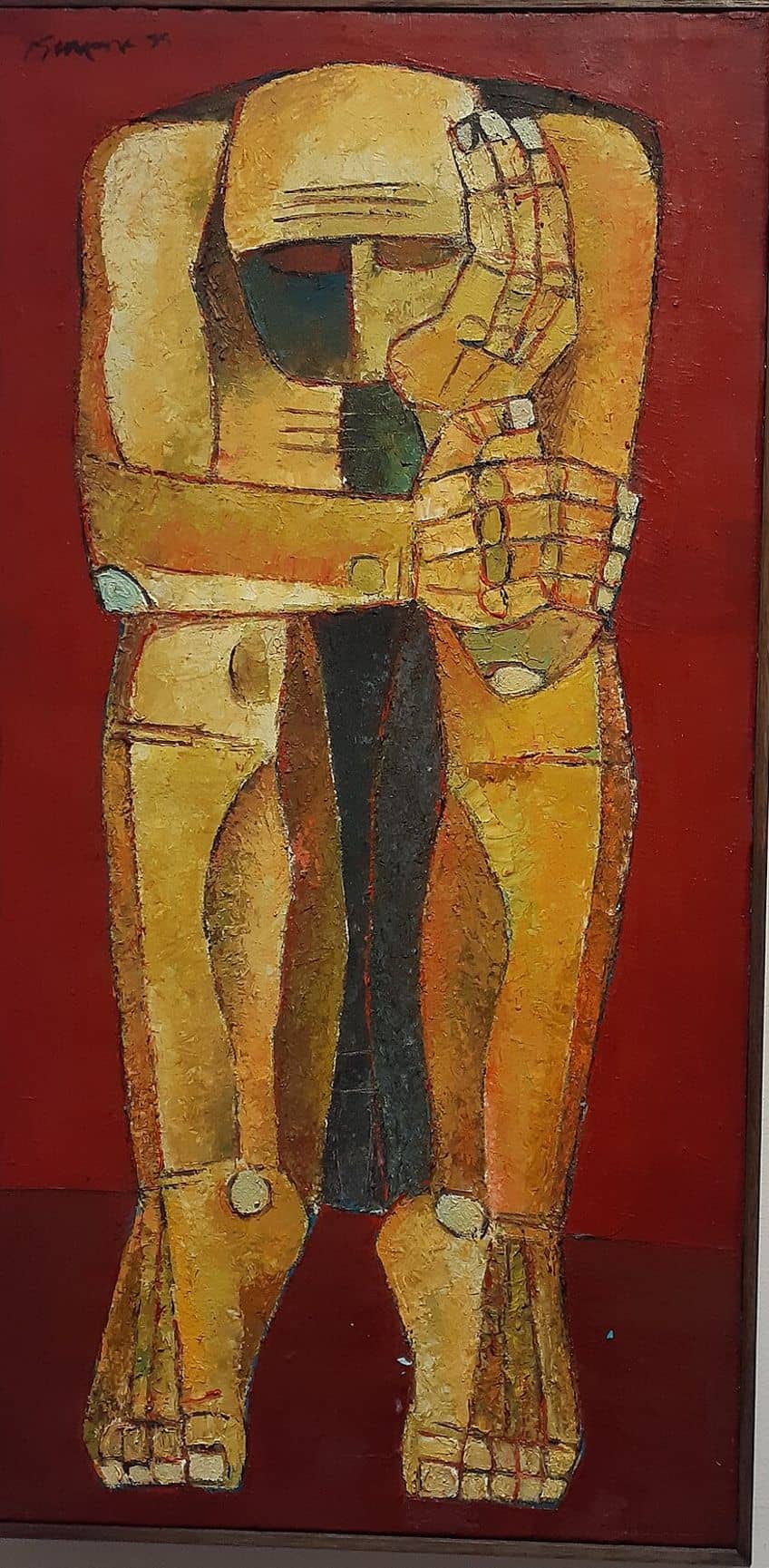
The blaring sky speaks to the societal boundaries that restrict and define these lives spent laboring in the sun, suggesting a world both insular and isolated from the larger societal framework. This insularity is further emphasized by the absence of horizon or distant landscapes, focusing the narrative squarely on the fishermen and their immediate environment.
In the tapestry of Philippine artistry, the threads of Ang Kiukok’s biography, his captivating paintings, and his profound contributions to the art association of the Philippines weave together to form a narrative of creative brilliance and societal reflection. Kiukok’s canvases stand as a testament to his mastery of technique and his ability to distill complex themes into visually striking compositions. His role within the art association of the Philippines exemplifies his commitment to fostering a vibrant artistic community, leaving an enduring legacy that continues to inspire and provoke contemplation. As we navigate the contours of his life’s work, we unearth a profound artistic journey that not only enriches the realm of Philippine art but also speaks to the universal language of human expression.
Frequently Asked Questions
What Is the Greatest Contribution of Ang Kiukok?
Ang Kiukok’s greatest contribution lies in his revolutionary reinterpretation of artistic forms, which breathed new life into Philippine visual art. By skillfully melding cubist influences with local narratives, he introduced a groundbreaking approach that not only expanded the boundaries of creative expression but also ignited conversations about identity, societal issues, and the fusion of tradition with modernity. His masterful manipulation of bold lines, vibrant colors, and textured surfaces birthed a visual language that transcends generations, leaving an indelible mark on the artistic landscape and inspiring subsequent artists to explore the depths of their creativity.
What Is the Most Expensive Ang Kiukok Painting?
Ang Kiukok’s painting that sold for the highest price to date is Fishermen, which was sold at auction for approximately PHP 41.9 million (around $806,000 USD) in 2010. This remarkable achievement underscores the enduring appeal and value of Ang Kiukok’s masterpieces in the art market, reflecting the profound impact of his artistic legacy. Please note that art prices can fluctuate over time, and there may have been developments beyond 2010 which were not recorded.
What Awards Did Ang Kiukok Win?
Ang Kiukok received numerous accolades and awards throughout his illustrious career. Notably, he was a recipient of the prestigious Ten Outstanding Young Men (TOYM) award in the field of Art in 1963, which highlighted his early impact on the Philippine art scene. Additionally, his remarkable contributions were recognized on an international level when he was chosen to represent the Philippines at the 1964 Venice Biennale—an honor that solidified his status as a trailblazing artist. His ability to capture the essence of his subjects and society through his art earned him a lasting legacy within the artistic community and garnered admiration both at home and abroad.
Nicolene Burger is a South African multi-media artist, working primarily in oil paint and performance art. She received her BA (Visual Arts) from Stellenbosch University in 2017. In 2018, Burger showed in Masan, South Korea as part of the Rhizome Artist Residency. She was selected to take part in the 2019 ICA Live Art Workshop, receiving training from art experts all around the world. In 2019 Burger opened her first solo exhibition of paintings titled, Painted Mantras, at GUS Gallery and facilitated a group collaboration project titled, Take Flight, selected to be part of Infecting the City Live Art Festival. At the moment, Nicolene is completing a practice-based master’s degree in Theatre and Performance at the University of Cape Town.
In 2020, Nicolene created a series of ZOOM performances with Lumkile Mzayiya called, Evoked?. These performances led her to create exclusive performances from her home in 2021 to accommodate the mid-pandemic audience. She also started focusing more on the sustainability of creative practices in the last 3 years and now offers creative coaching sessions to artists of all kinds. By sharing what she has learned from a 10-year practice, Burger hopes to relay more directly the sense of vulnerability with which she makes art and the core belief to her practice: Art is an immensely important and powerful bridge of communication that can offer understanding, healing and connection.
Nicolene writes our blog posts on art history with an emphasis on renowned artists and contemporary art. She also writes in the field of art industry. Her extensive artistic background and her studies in Fine and Studio Arts contribute to her expertise in the field.
Learn more about Nicolene Burger and the Art in Context Team.
Cite this Article
Nicolene, Burger, “Ang Kiukok – Introducing the Famous Filipino Artist.” Art in Context. September 4, 2023. URL: https://artincontext.org/ang-kiukok/
Burger, N. (2023, 4 September). Ang Kiukok – Introducing the Famous Filipino Artist. Art in Context. https://artincontext.org/ang-kiukok/
Burger, Nicolene. “Ang Kiukok – Introducing the Famous Filipino Artist.” Art in Context, September 4, 2023. https://artincontext.org/ang-kiukok/.


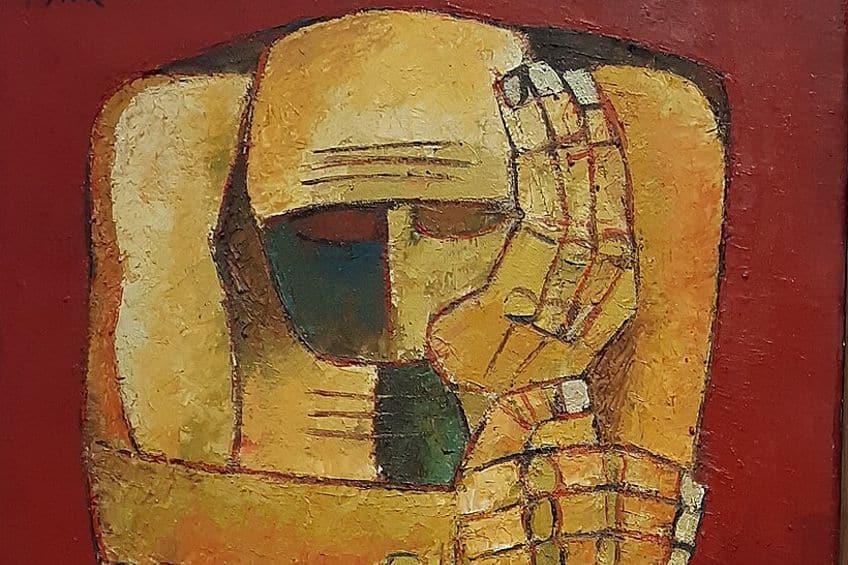


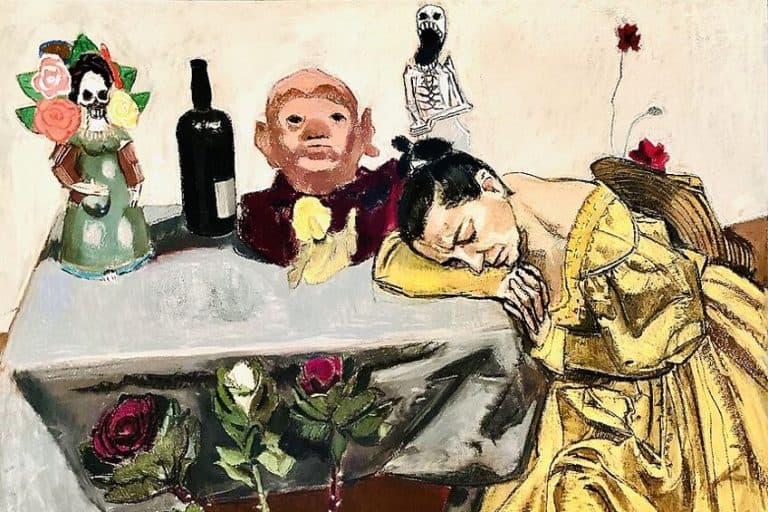

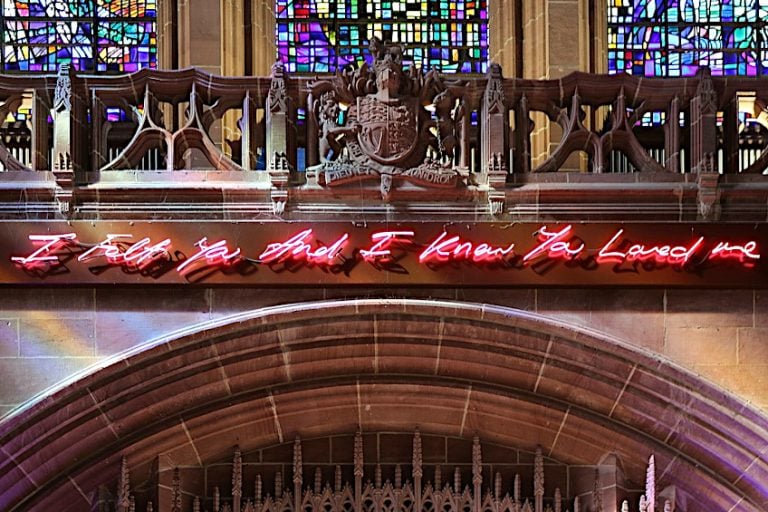

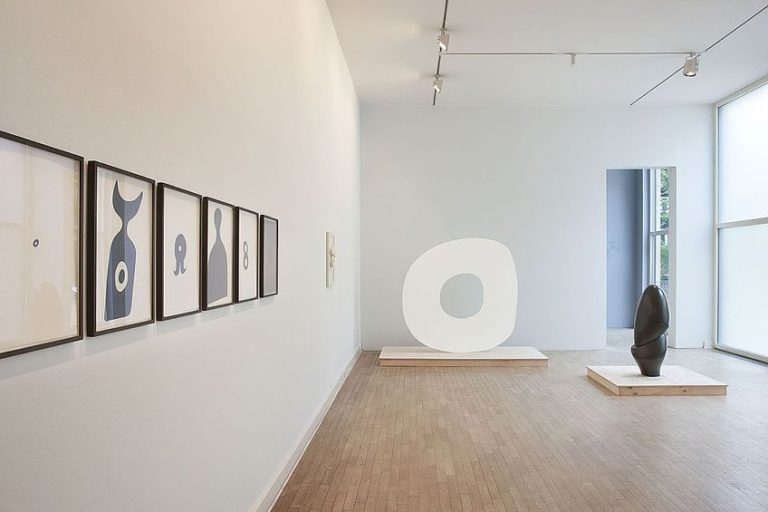


What I find especially fascinating is how Kiukok’s art balanced brutality with beauty.